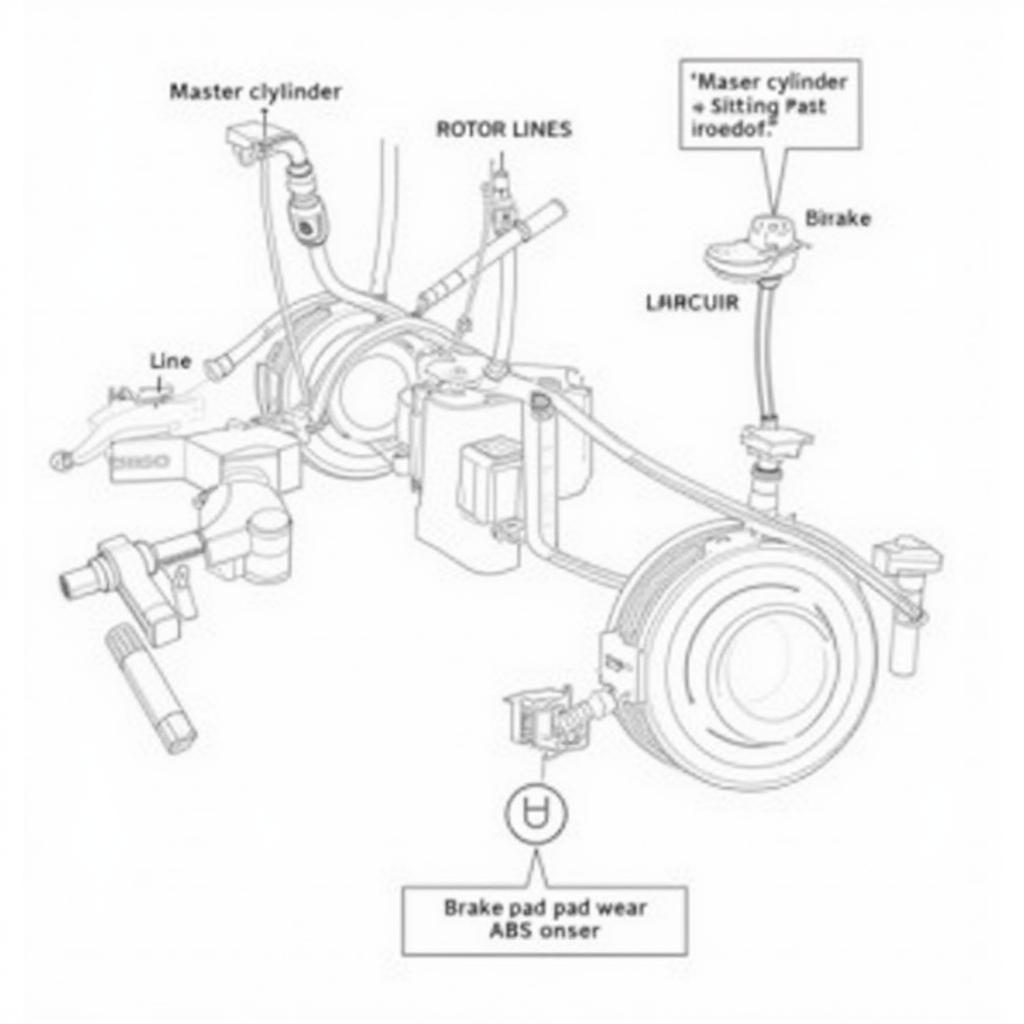The brake warning light on your 2000 Toyota Tundra is a crucial safety feature that shouldn’t be ignored. When it illuminates, it signals a potential issue with your braking system, ranging from a simple parking brake engagement to more serious concerns like low brake fluid or a malfunctioning ABS system. This comprehensive guide will delve into the common causes behind a 2000 Tundra brake warning light and provide you with the necessary steps to troubleshoot and address them.
Understanding Your Tundra’s Brake Warning Light
Before diving into troubleshooting, it’s essential to understand what triggers your brake warning light. This light is directly connected to several components within your Tundra’s braking system. Here’s what typically sets it off:
- Parking Brake Engaged: The most straightforward reason is often the most overlooked. If your parking brake is even slightly engaged, the warning light will illuminate.
- Low Brake Fluid: Brake fluid is the lifeblood of your braking system. A drop in fluid level often points to a leak, requiring immediate attention.
- Worn Brake Pads: Your Tundra’s brake pads are equipped with wear indicators. When they wear down to a certain point, these indicators contact the rotor, triggering the warning light.
- ABS System Malfunction: The Anti-lock Braking System (ABS) plays a critical role in preventing wheel lockup during braking. If the ABS system encounters an issue, the warning light will activate to alert you.
Troubleshooting a 2000 Tundra Brake Warning Light
Now, let’s walk through a systematic approach to diagnose and potentially fix the issue:
-
Check the Parking Brake: Begin with the simplest check. Ensure your parking brake is fully disengaged.
-
Inspect Brake Fluid Level: Park your Tundra on a level surface, open the hood, and locate the brake fluid reservoir. The reservoir will have a “Min” and “Max” marking. If the fluid level is below the “Min” mark, add the correct type of brake fluid (as specified in your owner’s manual) until it reaches the “Max” line.
Expert Insight: “Never drive your Tundra with low brake fluid. Even a small leak can lead to a dangerous loss of braking power,” warns John Miller, a veteran automotive technician with over 20 years of experience. “If you’ve had to add brake fluid, get the system inspected for leaks as soon as possible.”
-
Inspect Brake Pads: If the fluid level is fine and the parking brake is disengaged, it’s time to examine your brake pads. Jack up your Tundra and secure it on jack stands. Remove a wheel to gain access to the brake caliper and pads. Look for significant wear on the brake pads. If the pads are thin or worn down to the metal wear indicators, they need replacement.
-
Check for Visible Brake Fluid Leaks: While inspecting the brake pads, take a moment to check for any visible brake fluid leaks around the brake lines, calipers, and wheel cylinders.
-
Consider ABS Issues: If the previous steps don’t reveal the culprit, the problem might lie within the ABS system. Diagnosing ABS problems typically requires specialized diagnostic tools. It’s recommended to take your Tundra to a trusted mechanic or dealership equipped to handle ABS diagnostics and repairs.
When to Seek Professional Help
While this guide provides basic troubleshooting steps, remember that working on your vehicle’s braking system can be dangerous if you’re not experienced. If you’re uncomfortable with any of these steps or suspect a more complex issue, don’t hesitate to seek professional help.
“Brakes are not a DIY project for everyone,” says Miller. “If you’re in doubt, it’s always best to err on the side of caution and have a qualified mechanic take a look.”
Conclusion
A glowing brake warning light on your 2000 Tundra should never be ignored. By understanding the common causes and following these troubleshooting steps, you can take the first step towards addressing the problem. Remember, a well-maintained braking system is paramount for your safety and the safety of others on the road.

